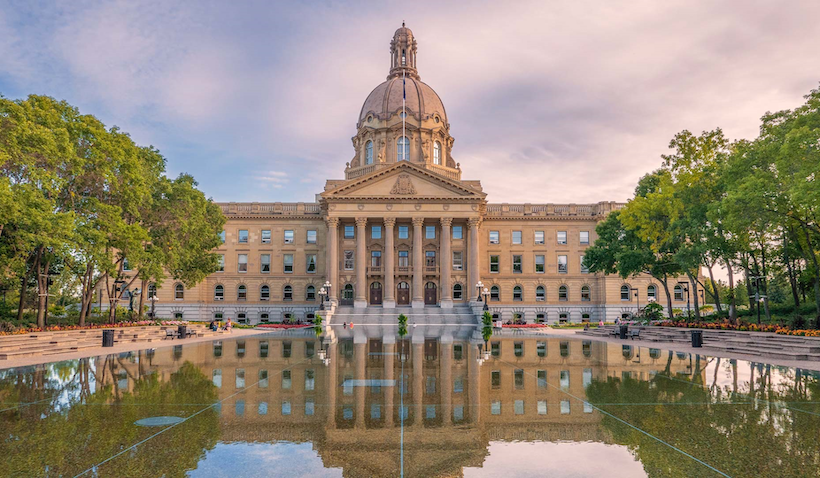Alberta’s government is offering $175 million to help cover costs for municipalities and Métis settlements recovering from an already unprecedented wildfire season.
Nancy Dodds, mayor of the town of Drayton Valley, 145 km southwest of Edmonton, said at the provincial announcement Tuesday the town, which was forced to evacuate residents for more than a week in May, is still assessing the cost of damages, but news of the program came as a relief.
Stephen Lacroix, managing director of the Alberta Emergency Management Agency, said if a fire started inside the Alberta forest protection area, the provincial Forestry and Parks ministry is responsible for the costs of fighting that fire.
Normally, if a fire starts outside the protection area, for example on private land, municipalities are responsible for paying for firefighting efforts.
Under the funding envelope announced Tuesday, Lacroix said local authorities can apply for the province to pay up to 90 per cent of those outstanding costs.
Alberta Public Safety and Emergency Preparedness Minister Mike Ellis said there will be no dollar cap on applications, which will be reviewed on a case-by-case basis.
The cash can be used to pay for things like volunteer firefighter wages, staff overtime, and outfitting evacuation centres. It could also help pay to fix infrastructure damaged in order to keep fires away from communities.
“An example of an eligible cost would be remediating a public park that was torn up to serve as a firebreak, fences cut to allow access to property to fight wildfires or build fire guards, or other property that was damaged to limit the spread of these wildfires,” he said.
‘The loss is immeasurable’
According to the Alberta Wildfire dashboard, Alberta has counted 788 total wildfires this season, burning more than 1.5 million hectares of land. About 38,000 Albertans have been forced from their homes.
Lacroix said at least 52 communities have been impacted and saddled with costs across the province.
“We know that it is the worst wildfire season in Alberta’s history,” he said, noting all but two evacuation orders have been lifted.
Drayton Valley-Devon UCP MLA Andrew Boitchenko said on top of 7,000 residents being forced to flee their homes, heavy rainfall and rising waters are now posing an additional threat.
“The loss is immeasurable, and healing will take time,” he said.
Ellis said it’s too early to say whether the $1.5 billion in disaster contingency funding set aside in the 2023-24 provincial budget will need to be reassessed.
Municipal Affairs Minister Ric McIver said the costs of battling the wildfires so far are already approaching $700 million, but it’s difficult to predict how many floods, fires or tornadoes will strike this year.
The same disaster recovery program has been used to help communities recover from other major natural disasters, including the 2020 northern Alberta floods, the 2016 fire in Fort McMurray, the 2013 floods in southern Alberta, and the 2011 Slave Lake wildfires
The financial assistance is not meant to replace fire insurance coverage, and isn’t available to homeowners, residential tenants, small business owners, landlords, agricultural operations, condominium associations and not-for-profit organizations.
Support for emergency response and recovery in First Nations communities is generally covered by the federal government.
When Ellis was asked what recourse Indigenous communities and Metis settlements who have been refused fire insurance might have, he said the provincial government is aware of the issue and is in talks with affected communities.
“We’re working on that right now,” said Ellis.
Experts say climate change has contributed to the hot and dry conditions that increase wildfire risk.


